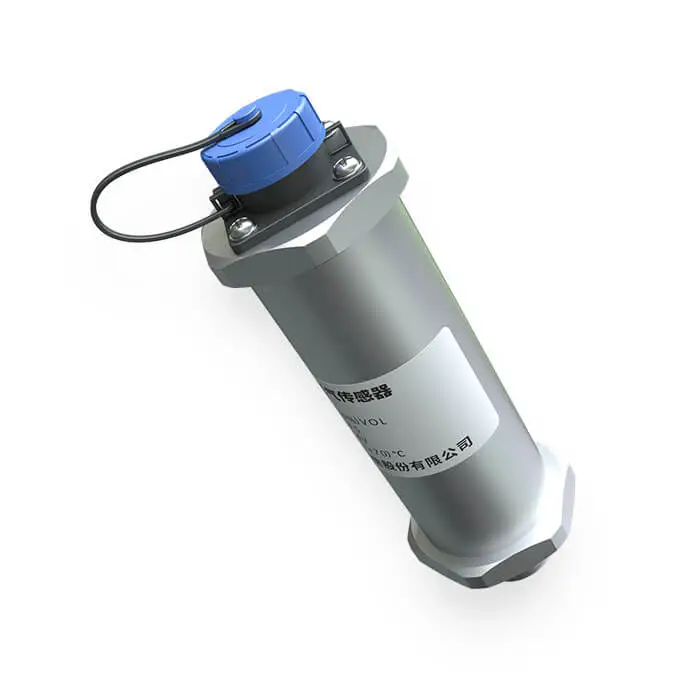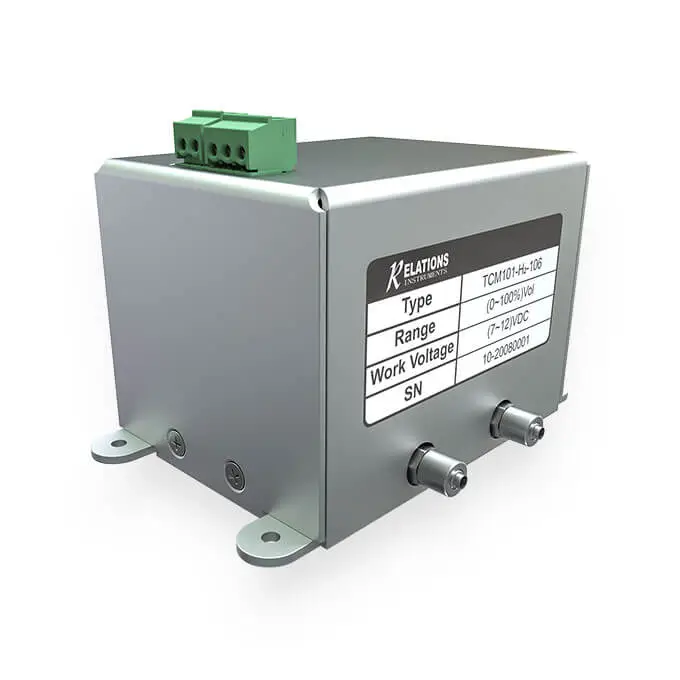Hydrogen sensor
hydrogen sensor
Hydrogen sensors are based on different physical or chemical principles, so they have their own advantages and disadvantages in terms of performance, cost, and application fields. The selection of the appropriate sensor type usually depends on the specific application requirements, such as detection range, sensitivity, response time, environmental conditions, and cost.
Electrochemical sensors
Electrochemical hydrogen sensors detect hydrogen gas through a chemical reaction between hydrogen gas and electrode materials. In an electrochemical cell, when hydrogen molecules come into contact with the working electrode, they are oxidized or reduced, generating an electric current. The magnitude of this current is directly proportional to the concentration of hydrogen gas. Sensors typically contain reference electrodes and counter electrodes inside to ensure measurement accuracy and stability.
Advantages: High sensitivity, fast response, and the ability to detect hydrogen at low concentrations.
Disadvantages: It is susceptible to environmental factors such as temperature and humidity, requires regular calibration, and has a relatively short service life.
Optical sensors
Optical hydrogen sensors typically rely on chemical reactions between hydrogen gas and certain materials (such as palladium or its alloys), which can cause changes in the optical properties of the materials (such as refractive index or absorption spectrum). Sensors detect the presence of hydrogen by measuring these changes. Optical sensors can be based on different optical principles, such as fiber optic interference, surface plasmon resonance (SPR), or optical absorption spectroscopy.
Advantages: It is not affected by environmental conditions (such as temperature and humidity), does not require direct contact with hydrogen, and has good long-term stability.
Disadvantage: High cost, may require complex optical systems and data analysis techniques.
Thermal conductivity sensor
The thermal conductivity hydrogen sensor is based on the principle that hydrogen has a higher thermal conductivity than air. Sensors typically contain two thermocouples or thermistors, one placed in an environment in contact with hydrogen and the other in a closed or known hydrogen concentration environment. The voltage change generated by the temperature difference between the two can be used to calculate the hydrogen concentration.
Advantages: Simple structure, moderate cost, and good stability.
Disadvantages: Low sensitivity and selectivity, suitable for detecting high concentration hydrogen gas.
Metal oxide semiconductor
(MOS) sensors
The core of MOS hydrogen sensors is a metal oxide semiconductor layer, typically composed of materials such as SnO ₂. When hydrogen molecules come into contact with semiconductor surfaces, they react with oxides, changing the electron concentration on the surface. This change will cause a change in the conductivity of the material, thereby detecting the presence of hydrogen gas.
Advantages: Short response time, low cost, suitable for different environments.
Disadvantages: Highly affected by temperature, with relatively low sensitivity and selectivity.
Surface plasmon resonance (SPR) sensor
SPR sensors use the surface plasmon resonance phenomenon of metal thin films (usually gold or silver) to detect hydrogen gas. When light waves irradiate a metal surface, they excite electron resonance on the surface, producing plasma waves. The adsorption of hydrogen gas can change the refractive index of metal films, thereby affecting resonance conditions. By measuring this effect, the presence of hydrogen can be detected.
Advantages: extremely high sensitivity and fast response, capable of detecting extremely low concentrations of hydrogen gas.
Disadvantages: High cost, complex equipment, and usually requiring professional operation.
Infrared absorption sensor
The infrared absorption sensor is based on the characteristic of hydrogen molecules absorbing specific wavelengths of infrared light. This type of sensor emits infrared light of a specific wavelength through a hydrogen sample. If hydrogen gas is present, a portion of the light will be absorbed. The concentration of hydrogen can be calculated by measuring the change in light intensity passing through the hydrogen sample.
Advantages: High precision, not easily affected by factors other than gas composition.
Disadvantages: High cost and certain requirements for gas absorption characteristics.
Pressure change sensor
This type of sensor is based on the hydrogen storage reaction between hydrogen and metal materials (such as palladium). When hydrogen molecules come into contact with these metal materials, they are absorbed and form metal hydrides, causing changes in volume or pressure. By measuring these changes, the concentration of hydrogen gas can be indirectly detected.
Advantages: Fast response speed, wide detection range, suitable for various gases.
Disadvantages: Accuracy and sensitivity are limited by the magnitude of pressure changes and the accuracy of the detection system.
Catalytic combustion sensor
Catalytic combustion sensors rely on the combustion reaction of hydrogen gas on the surface of catalysts such as palladium or platinum. This reaction generates heat, causing the sensor temperature to rise. By measuring temperature changes, the presence and concentration of hydrogen can be determined.
Advantages: High sensitivity, able to detect hydrogen concentration over a wide range.
Disadvantages: It requires a high working temperature, consumes a lot of energy, and poses a risk of overheating.
The working principles of these sensors determine their advantages and disadvantages, and selecting the appropriate type of sensor usually depends on the specific application requirements, including detection range, sensitivity, response time, environmental conditions, and cost. In practical applications, suitable sensor types may be selected based on specific needs or combined with multiple sensing technologies to improve the accuracy and reliability of detection.
Comparison of Hydrogen Detection Principles
| Detection Principle | Electrochemical | Catalytic Combustion | Semiconductor | Palladium Alloy Film |
|---|---|---|---|---|
| Measuring Range | 0—10000 ppm | 0~4% vol | 0~10000 ppm | 15 ppm~100% vol |
| O2 Required or Not | YES | YES | YES | NO |
| Interfering Gas | CO, H2S, etc. | CO, hydrocarbons, etc. flammable gas | Reducing gases (Weak selectivity) | NO |
| Working Ambient Temperature and Humidity | -10—45°C, 15—90% RH | -10°C~60°C, (15~90)% RH | -20°C~60°C, (15~90)% RH | -20°C~100°C, 0~100% RH |
| Working life | 2 years | 3~5 years | 3~5 years | 10 years |


